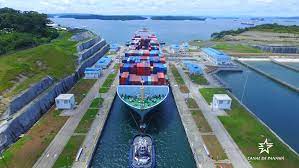Drought will cut Panama Canal revenue by up to $700 million

Revenue from tolls from the Panama Canal will decrease between 500 million and 700 million dollars in the fiscal year 2024 due to the restriction on the transit of ships that can use the route, currently limited by the drought which provided 30% less rain in 2023.
The administrator of the Panama Canal Authority (ACP), Ricaurte Vásquez, said that a reduction of $200 million had been estimated for the fiscal year of 2023, but due to the extension of transit restrictions of boats, due to the drought that has affected the level of lakes Gatún and Alajuela, a greater drop in income is now projected.
In addition, in 2024 a second phase of toll adjustments will be implemented that would give some respite in regards to the Canal’s income but these are measures that cannot be depended on says Vásquez.
“I am not sure that the loss of that income – from tolls – can be corrected in another way because, to the extent that auction prices decrease and the number of ships in line is lower, the income is not recovered,” he explained.
In 2023, the Canal closed with less load and fewer transits compared to the previous year, but an adjustment in the rate determined that the income from tolls was located at $3,348 million, that is, $320 million above 2022.
The administrator reiterated that the Channel is not transactional and maintains long-term relationships with customers. “So it doesn’t seem reasonable to profit from a long-term business relationship,” he said
The lack of water has caused a reduction in the number of boats using the route. From an average of between 36 and 38 ships, the passage of 24 ships per day has now been scheduled until April. Hence, the administrator estimates that this will have a financial effect at the end of the fiscal year.
All of this is caused by the drought, exacerbated by the El Niño phenomenon, due to which the Panama Canal ended 2023 with 30% less rain and with no new reservoirs in sight.
El Niño is characterized by decreased rainfall and increased temperatures, causing heat and evaporation. This phenomenon will be present, at least until April 2024, influencing the patterns that affect the increase in temperatures both on land and in the ocean.
The administrator did not rule out that the number of daily transits could be further reduced if the water situation worsens and it does not rain at the expected levels between April and May of this year.





